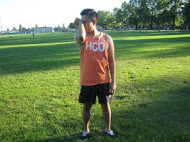Eye pressure can be altered by various factors such as standing on the head, drinking caffeine or using heavy weights. It is an issue for concern once the pressure is fixed in a too high or low range for an extended period.
The normal eye pressure is within 12-22 mm HG. If it drops below 12 mm HG, it indicates low pressure and if higher than 22 mm HG, it indicates high pressure.

What happens if I have high eye pressure?
High eye pressure occurs if excess fluid accumulates within the eye due to poor drainage or excessive production of aqueous humor which is the watery fluid in the eye that maintains the eye pressure.
Even though having high eye pressure is not intrinsically dangerous, it heightens the risk for developing glaucoma. Remember that there are no indications linked with high eye pressure, thus if over 40 years old, African-American descent or has a family history of nearsightedness or diabetes, a doctor should be seen if the individual has high eye pressure.
What happens if the pressure is low?
If an individual has low eye pressure, it is usually lower than 5 mm HG and generally arises after eye surgery. Even though it does not always trigger any symptoms, it can lead to the following:
- Blurry vision
- Abrupt eye pain
- Cloudy vision
- Bleeding beneath the retina
- Loss of vision
If the pressure drops significantly, one blink is enough to impair vision. Even though low pressure might arise in the wake of surgery and rarely serious, if it lasts for a long time, it requires surgical intervention.
When it is an emergency?
A significant spike in the eye pressure might be an indication of acute angle-closure glaucoma. This is a serious condition that develops if the fluid in the eye could not drain. The condition occurs if the eye pressure rises dramatically that it impairs the optic nerve.
The indications of the acute angle-closure form of glaucoma include vision loss, red eyes, vomiting, dilated pupils, nausea, headache and a halo-effect when looking at a light source. If the individual has glaucoma and develops any of these symptoms, a doctor should be seen right away.
FACT CHECK
https://www.glaucoma.org/gleams/high-eye-pressure-and-glaucoma.php
